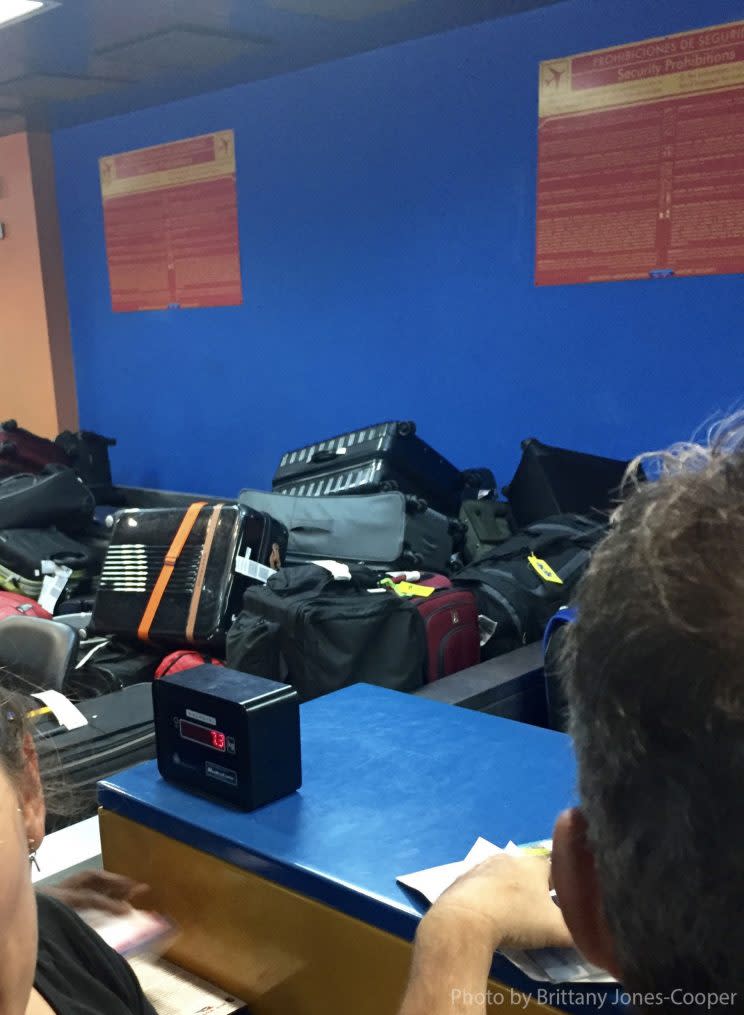What you need to know about traveling to Cuba after Castro's death

On Nov. 25, Cuba said a final farewell to Fidel Castro, the controversial leader who served as president for nearly 32 years before officially handing over the reins to his brother Raul in 2008.
Castro’s death has been met with mixed emotions, and will almost certainly signify a new chapter in Cuba’s history. For travelers, questions now linger about how his death will affect tourism between Cuba and the US.
The number of Americans visiting Cuba has steadily increased since President Barack Obama announced that the two countries would begin to normalize diplomatic relations in December 2014. Since then, both countries opened embassies, direct mail service returned and cruises are now stopping in the small island nation. In fact, Carnival’s May 1 cruise from the US to Cuba was the first since 1959.
In 2015, 161,000 American tourists visited Cuba, up 77% from 2014. This year, 94,000 Americans visited Cuba from January to May alone. That increase in tourism is only magnified by the fact that US airlines have begun daily flights to the island. In September, JetBlue (JBLU) flight 387 took off from Fort Lauderdale Airport and landed in Santa Clara, Cuba — the first US-based flight to land in the country in more than 50 years.
In addition to JetBlue, American Airlines and Southwest also offer daily flights to Cuba. United Airlines will start flying to the island on Nov. 29, followed by Delta on Dec. 1. Spirit and Frontier Airlines plan to initiate flights in December, and Alaska Airlines will begin flying in January 2017.
After Castro’s death, Cuba will remain in the headlines, and many of you might be thinking about planning a trip to Cuba —after all, it is the high season for tourism. I had the opportunity to travel to Cuba in April, and had a memorable and eye-opening experience. Other than the lack of Wi-Fi, there are some things you should know about the island before you go. As you plan, here are some things to remember.
Who can go:

Before the US normalized relations with Cuba, travel to the island was only allowed under strict guidelines. Today tourist travel to Cuba is still prohibited for US citizens, which means you can’t just go to Cuba to relax and sip rum and cokes on the beach. However, Americans can apply for a Cuban visa if their reason for travel fits in one of these 12 categories:
Family visits
Official business of the US government, foreign governments, and certain intergovernmental organizations
Journalistic activity
Professional research and professional meetings
Educational activities
Religious activities
Public performances, clinics, workshops, athletic and other competitions, and exhibitions
Support for the Cuban people
Humanitarian projects
Activities of private foundations or research or educational institutes
Exportation, importation, or transmission of information or information materials
Certain authorized export transactions.
Who determines what category you fall under? You do. When booking a trip, your airline or your travel agent will ask you to pick one of the 12 reasons for travel — it’s kind of like an honor system. Some of the categories are obvious, like visiting family, and some like “support the Cuban people” are more vague. As someone who has gone through this process, I will say that none of the border agents in either country seemed concerned with why I was traveling. With that said, it’s always good to travel with documentation that can back up your story, like a letter from your church, flyer for an event, or the itinerary for your conference. Border agents are also more comfortable when you can provide an address for where you’ll be staying.
What to know:

1. Obtain a tourist card
Every American traveler needs a visa, a.k.a. a tourist card, to travel to Cuba. JetBlue is offering tourists cards at check-in for $50 (this does not include visas for business or journalism).
American Airlines will also have “Cuba ready” booths located inside and outside of security at Miami International Airport where passengers can obtain a visa for a fee. The same service will be available when the airline starts flights from Charlotte to Havana.
Another easy way to get a visa is to book through a travel agency, like Cuba Travel Services, that will get one for you.
And finally, you can apply for a visa by sending photocopies of your travel documents and payment to the Cuban Consulate.
2. Cash is king
Currently, US-issued credit and debit cards do not work in Cuba. This means that tourists need to bring enough cash to cover expenses for the entire trip.
It’s important to note that Cuba uses two forms of currency, the Cuban Convertible Pesos (CUC), and the Cuban peso (CUP). CUC’s are the more popular currency for travelers, and tourists can exchange dollars for them at any Cuban airport. Money can also be exchanged at Cadeca money exchanges within the city or at the front desk if you’re staying at a hotel.
Know that exchanging US dollars will incur a 10% exchange fee. This fee doesn’t apply to euros, pounds, or Canadian dollars, so if you want to avoid the surcharge, it might be strategic to convert your dollars to one of those currencies beforehand, and exchange it to CUC’s once you arrive in Cuba.

3. The airports are kind of a mess
US airlines are ramping up service to Cuba, but that doesn’t mean the airports there are prepared for the additional traffic. In April I flew out the airport in Havana and was shocked at how chaotic the check-in process was. The lines were long, and it was hard to determine which queue belonged to which airline. When we finally got up to the counter, there was a mountain of checked luggage piling up behind the counter. It was unclear how they were going to ensure each bag would get to the appropriate destination on time. This experience taught me that it’s wise to avoid checking a bag if possible. And if you have to check, make sure to carry on anything valuable.
However, there is a silver lining. Over the summer, Cuba announced it’s working with France to modernize the Jose Marti International Airport in Havana. Officials from Aeroports de Paris, which runs Charles de Gaulle airport, will operate the airport under a concession contract, and the French company Bouygues Batiment International will handle construction. So while things might be a little chaotic now, the future of traveling to Cuban airports is looking better.
4. Choose souvenirs wisely
Cuban cigars are a luxury in the US, so it’s natural to want to stock up on them when visiting Cuba — but don’t get out of control. According to the US Department of Treasury, travelers can bring up to $100 worth of cigars back into the US. I stuck to this rule during my trip, but when I went through customs, it was very uneventful. The agent asked what I was bringing back; I said “cigars,” and he didn’t ask how much or how many. He just let me pass. The rule may not be strictly enforced, but it’s probably a good idea to follow it anyway. In addition to $100 worth of tobacco, travelers can bring back up to $400 in personal goods and souvenirs.

5. Stay local, bring extra toiletries
There are plenty of hotels in Cuba, but many tourists opt to stay in B&Bs for a more local feel. In Cuba, these accommodations are called Casa Particulares (guest houses), and they are available in most major cities. Every casa particular I stayed in charged about 30 CUC’s a night ($30 USD), and they threw in breakfast for an extra $5. Airbnb has exploded in Cuba, and many casas can now be rented on the site. There are other listing sites as well.
The accommodations are homey and simple, so don’t expect much in the way of amenities. Bring your own toiletries, including soap and shampoo, because there won’t likely be any in your room. It’s also a nice gesture to bring extra toiletries and necessities for locals you meet along the way. The country still rations food and consumer products, so many people still struggle getting everyday household items. Bringing along a couple extra travel-size soaps, shampoos, lotions, shaving cream, and toothpaste can be a nice way to say thank you.
6. You won’t be lost in translation
I traveled to six different cities in Cuba, and language was never really an obstacle. Most of the people I met knew at least a few words in English, and were able to point me in the right direction if I asked for a certain landmark. With that said, knowing some basic words in Spanish will be extremely helpful if you’re traveling to Cuba. I’d suggest brushing up on Spanish verbs with the app Duolingo, and using Google Translate when you get stumped.
7. Consider travel health insurance
Cuba has required visitors to have travel medical coverage since 2010. Cuban authorities won’t let you leave the country if you have outstanding medical bills, so having coverage will protect you if you have a medical emergency. Every health insurance company has different rules concerning Cuba, so it’s important to check your plan before you leave the country. If you book a chartered flight through a travel agency, they often include coverage in the fare. JetBlue also has a similar policy.
If you do need to buy travel health insurance, find the right plan for you by checking out comparison sites like Squaremouth or InsureMyTrip.
Brittany is a writer at Yahoo Finance. This article was updated on Nov. 28, 2016.
Read more:
Low on cash? Now there is layaway for airline tickets
This woman retired at 33 and is traveling the world without going broke
They quit their jobs to visit all 59 National Parks in one year
